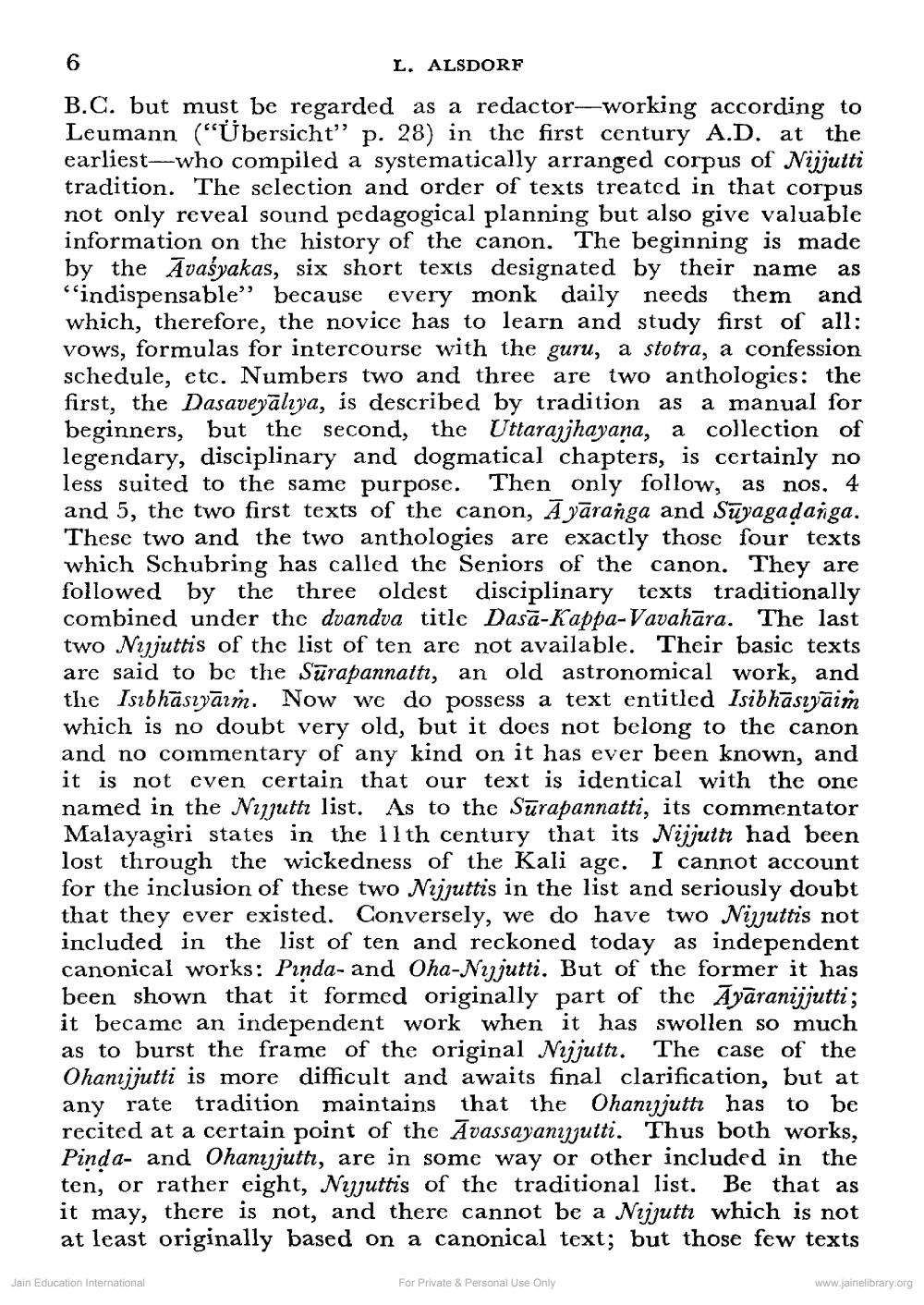________________
L. ALSDORF
B.C. but must be regarded as a redactor-working according to Leumann (“Übersicht" p. 28) in the first century A.D. at the earliest—who compiled a systematically arranged corpus of Nijjutti tradition. The selection and order of texts treated in that corpus not only reveal sound pedagogical planning but also give valuable information on the history of the canon. The beginning is made by the Āvaśyakas, six short texts designated by their name as “indispensable” because every monk daily needs them and which, therefore, the novice has to learn and study first of all: vows, formulas for intercourse with the guru, a stotra, a confession schedule, etc. Numbers two and three are two anthologies: the first, the Dasaveyālıya, is described by tradition as a manual for beginners, but the second, the Uttarajjhayana, a collection of legendary, disciplinary and dogmatical chapters, is certainly no less suited to the same purpose. Then only follow, as nos, 4 and 5, the two first texts of the canon, Ā yāranga and Suyagadanga. These two and the two anthologies are exactly those four texts which Schubring has called the Seniors of the canon. They are followed by the three oldest disciplinary texts traditionally combined under the dvandva title Dasā-Kappa-Vavahāra. The last two Nijuttis of the list of ten are not available. Their basic texts are said to be the Surapannatti, an old astronomical work, and the Isibhāsıyāim. Now we do possess a text entitled Isibhasıyāim which is no doubt very old, but it does not belong to the canon and no commentary of any kind on it has ever been known, and it is not even certain that our text is identical with the one named in the Nijuttı list. As to the Surapannatti, its commentator Malayagiri states in the 11th century that its Nijjuitr had been lost through the wickedness of the Kali age. I cannot account for the inclusion of these two Najjuttis in the list and seriously doubt that they ever existed. Conversely, we do have two Nijuttis not included in the list of ten and reckoned today as independent canonical works: Pında- and Oha-Nijutti. But of the former it has been shown that it formed originally part of the Āyaranijjutti; it became an independent work when it has swollen so much as to burst the frame of the original Nijjuttı. The case of the Ohanij jutti is more difficult and awaits final clarification, but at any rate tradition maintains that the Ohanijjuttı has to be recited at a certain point of the Avassayanıjutti. Thus both works, Pinda- and Ohanısjuttr, are in some way or other included in the ten, or rather eight, Ninjuttis of the traditional list. Be that as it may, there is not, and there cannot be a Nijjutti which is not at least originally based on a canonical text; but those few texts
Jain Education International
For Private & Personal Use Only
www.jainelibrary.org




